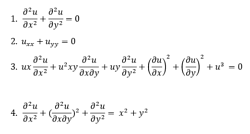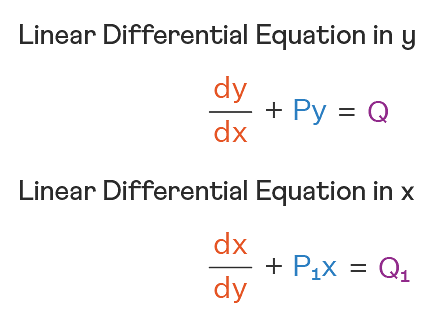The negation of the Boolean expression ((~ q) ∧ p) ⇒ ((~ p) ∨ q) is logically equivalent to:
- p ⇒ q
- q ⇒ p
- ~ (p ⇒ q)
- ~ (q ⇒ p)
The Correct Option is A
Solution and Explanation
The correct option is(C): ~ (p ⇒ q).
Let S : ((~ q) ∧ p) ⇒ ((~ p) ∨ q)
⇒ S : ~ ((~ q) ∧ p) ∨ ((~ p) ∨ q)
⇒ S : (q ∨ (~ p)) ∨ ((~ p) ∨ q)
⇒ S : (~ p) ∨ q
⇒ S : p ⇒ q
So, negation of S will be ~ (p ⇒ q)
Top Questions on Differential equations
- If $ x + \frac{1}{x} = 4 $, find the value of $ x^4 + \frac{1}{x^4} $.
- BITSAT - 2025
- Mathematics
- Differential equations
- If $ a, b $ are roots of the equation $ x^2 - 5x + 6 = 0 $, find the value of $ a^3 + b^3 $.
- BITSAT - 2025
- Mathematics
- Differential equations
- If 'a' and 'b' are the order and degree respectively of the differentiable equation \[ \frac{d^2 y}{dx^2} + \left(\frac{dy}{dx}\right)^3 + x^4 = 0, \quad \text{then} \, a - b = \, \_ \_ \]
- KCET - 2025
- Mathematics
- Differential equations
- Let \( y = y(x) \) be the solution of the differential equation \[ \cos(x \log(\cos x))^2 \, dy + (\sin x - 3 \sin x \log(\cos x)) \, dx = 0, \quad x \in \left( 0, \frac{\pi}{2} \right) \] If \( y\left( \frac{\pi}{4} \right) = -1 \), then \( y\left( \frac{\pi}{6} \right) \) is equal to:
- JEE Main - 2025
- Mathematics
- Differential equations
- Let \( y = y(x) \) be the solution of the differential equation \( \frac{dy}{dx} + 3(\tan^2 x) y + 3y = \sec^2 x \), with \( y(0) = \frac{1}{3} + e^3 \). Then \( y\left(\frac{\pi}{4}\right) \) is equal to
- JEE Main - 2025
- Mathematics
- Differential equations
Questions Asked in JEE Main exam
- A group 15 element forms \( d\pi - d\pi \) bond with transition metals. It also forms a hydride, which is the strongest base among the hydrides of other group members that form \( d\pi - d\pi \) bonds. The atomic number of the element is ________________________.
- JEE Main - 2025
- Chemical bonding and molecular structure
- The value of \( (\sin 70^\circ)(\cot 10^\circ \cot 70^\circ - 1) \) is:
- JEE Main - 2025
- Trigonometric Identities
- Match List-I with List-II.

- JEE Main - 2025
- Dimensional analysis
Nature of compounds TeO₂ and TeH₂ is___________ and ______________respectively.
- JEE Main - 2025
- Inorganic chemistry
- Let \( A = [a_{ij}] \) be a matrix of order 3 \(\times\) 3, with \(a_{ij} = (\sqrt{2})^{i+j}\). If the sum of all the elements in the third row of \( A^2 \) is \( \alpha + \beta\sqrt{2} \), where \(\alpha, \beta \in \mathbb{Z}\), then \(\alpha + \beta\) is equal to:
- JEE Main - 2025
- Matrices and Determinants
Concepts Used:
Types of Differential Equations
There are various types of Differential Equation, such as:
Ordinary Differential Equations:
Ordinary Differential Equations is an equation that indicates the relation of having one independent variable x, and one dependent variable y, along with some of its other derivatives.
\(F(\frac{dy}{dt},y,t) = 0\)
Partial Differential Equations:
A partial differential equation is a type, in which the equation carries many unknown variables with their partial derivatives.

Linear Differential Equations:
It is the linear polynomial equation in which derivatives of different variables exist. Linear Partial Differential Equation derivatives are partial and function is dependent on the variable.

Homogeneous Differential Equations:
When the degree of f(x,y) and g(x,y) is the same, it is known to be a homogeneous differential equation.
\(\frac{dy}{dx} = \frac{a_1x + b_1y + c_1}{a_2x + b_2y + c_2}\)
Read More: Differential Equations